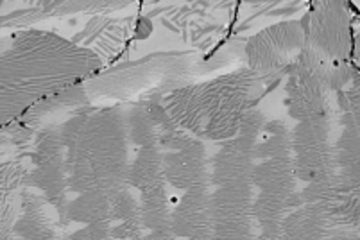All genres
1.
Journal Article
Effect of the atomic structure of complexions on the active disconnection mode during shear-coupled grain boundary motion. Physical Review Materials 8 (6), 063602 (2024)
2.
Journal Article
On the role of pre-existing defects in influencing hardness in nanoscale indentations — Insights from atomistic simulations. Journal of the Mechanics and Physics of Solids 154, 104511 (2021)
3.
Talk
Deformation mechanism of complexions in a Cu grain boundary under shear. FEMS EUROMAT 2023, Frankfurt am Main, Germany (2023)
4.
Talk
Disconnection activation in complexions of a Cu grain boundary under shear. 19th International Conference on Diffusion in Solids and Liquids (DSL-2023), Heraklion, Greece (2023)
5.
Talk
Stress driven grain boundary migration for different complexions of a Cu tilt grain boundary. Materials Science and Engineering Congress 2022, Darmstadt, Germany (2022)
6.
Talk
Atomistic simulation study of grain boundary migration for different complexions in copper. DPG-Tagung, Virtual (2021)
7.
Poster
Setup of a microscale fracture apparatus to study the interface behaviour in materials at high temperatures. Materials Day 2016, Ruhr Universitat Bochum, Bochum, Germany (2016)
8.
Thesis - PhD
Fundamentals of carbide decomposition and stability. Dissertation, Ruhr-Universität Bochum (2021)
9.
Thesis - PhD
Investigation of crystallographic character and molten-salt-corrosion properties of grain boundaries in a stainless steel using EBSD and ab-initio calculations. Dissertation, Ruhr-Universität Bochum, Bochum, Germany (2017)











